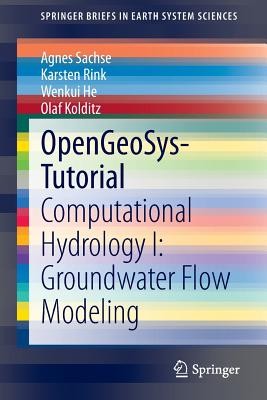
- We will send in 10–14 business days.
- Author: Agnes Sachse
- Publisher: Springer
- Year: 2015
- Pages: 113
- ISBN-10: 3319133349
- ISBN-13: 9783319133348
- Format: 15.6 x 23.4 x 0.7 cm, minkšti viršeliai
- Language: English
- SAVE -10% with code: EXTRA
Reviews
Description
This tutorial on the application of the open-source software OpenGeoSys (OGS) in computational hydrology is based on a one-week training course at the Helmholtz Centre for Environmental Research in Leipzig, Germany. It provides general information regarding hydrological and groundwater flow modeling and the pre-processing and step-by-step model setups of a case study with OGS and related components such as the OGS Data Explorer. The tutorial also illustrates the application of pre- and post-processing tools such as ArcGIS and ParaView. This book is intended primarily for graduate students and applied scientists who deal with hydrological-system analysis and hydrological modeling. It is also a valuable source of information for practicing hydrologists wishing to further their understanding of the numerical modeling of coupled hydrological-hydrogeological systems. This tutorial is the first in a series that will present further OGS applications in environmental sciences.
EXTRA 10 % discount with code: EXTRA
The promotion ends in 22d.18:56:23
The discount code is valid when purchasing from 10 €. Discounts do not stack.
- Author: Agnes Sachse
- Publisher: Springer
- Year: 2015
- Pages: 113
- ISBN-10: 3319133349
- ISBN-13: 9783319133348
- Format: 15.6 x 23.4 x 0.7 cm, minkšti viršeliai
- Language: English English
This tutorial on the application of the open-source software OpenGeoSys (OGS) in computational hydrology is based on a one-week training course at the Helmholtz Centre for Environmental Research in Leipzig, Germany. It provides general information regarding hydrological and groundwater flow modeling and the pre-processing and step-by-step model setups of a case study with OGS and related components such as the OGS Data Explorer. The tutorial also illustrates the application of pre- and post-processing tools such as ArcGIS and ParaView. This book is intended primarily for graduate students and applied scientists who deal with hydrological-system analysis and hydrological modeling. It is also a valuable source of information for practicing hydrologists wishing to further their understanding of the numerical modeling of coupled hydrological-hydrogeological systems. This tutorial is the first in a series that will present further OGS applications in environmental sciences.


Reviews